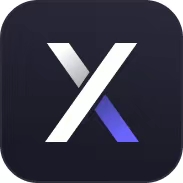dYdX 온라인 운영 교육: 차용
dYdX는 강력한 개방형 거래 플랫폼으로 주로 다음 세 가지 기능을 가지고 있습니다.
빌려주다
대출
마진 거래
이 시리즈의 첫 번째 기사에서는 지갑을 dYdX에 연결하는 방법과 자산을 예치하여 이자를 얻는 방법을 주로 소개했습니다. 이 기사에서는 dYdX에서 차용하는 방법을 살펴보고 dYdX 작동 방식과 관련된 두 가지 중요한 개념인 글로벌 대출 풀 및 담보에 대해 알아봅니다.
글로벌 대출 풀
dYdX에서 차용인과 대금업자는 모두 스마트 계약에 의해 관리되는 각 자산에 대해 하나씩 글로벌 대출 풀과 상호 작용합니다. dYdX에 자산을 예치하면 차용자가 동일한 자산을 빌릴 수 있는 해당 대출 풀에 자산이 예치됩니다. 이 모델을 통해 dYdX의 차용인과 대출자는 언제든지 자산을 입금하고 인출할 수 있습니다.
Lender와 Lender가 Lending Pool과 상호 작용함에 따라 각 자산에 대한 공급과 수요가 변경되어 각 자산의 활용률(대출 금액/공급 금액)에 영향을 미칩니다. dYdX의 이자율은 이러한 이용률을 기반으로 합니다. dYdX에는 각 자산에 대해 두 가지 이자율이 있음을 알 수 있습니다. 대금업자가 자산을 빌려주는 이자율(대출 이자율)과 차용인이 자산을 빌려주는 이자율(차입 이자율)입니다. 대부업자는 대금업자가 지불한 이자만 벌고 이자는 모든 대금업자에게 분배되기 때문에 차입 이자율은 항상 대출 이자율보다 높습니다.
dYdX가 이러한 요율을 계산하는 데 사용하는 정확한 공식은 도움말 센터에서 확인할 수 있습니다. 여기에서 dYdX의 과거 대출 금리도 확인할 수 있습니다.
약속
스테이킹은 dYdX에서 많이 접하게 되는 개념입니다. 담보 비율에 따라 빌릴 수 있는 금액과 청산 시기가 결정됩니다. 담보 비율을 계산하려면 단순히 (담보/부채)의 비율을 취하십시오. dYdX에서 이 비율은 각 자산의 달러 가치를 사용하여 계산됩니다.
예를 들어 다음과 같이 가정합니다.
ETH = $ 100
USDC = 1 미국 달러
사용자가 dYdX에 다음 계정 잔액을 가지고 있다고 가정해 보겠습니다.
2.5ETH
-200 USDC
이 사용자의 경우 다음과 같이 담보(양수 잔액) 및 부채(음수 잔액)를 계산할 수 있습니다.
담보: 2.5 ETH * $100 = $250
부채: $200 * $1 = $200
따라서 이 사용자의 지분율은 250 / 200 = 1.25 또는 125%가 됩니다.
dYdX에서는 담보 비율이 1.25 또는 125%가 될 때까지 자산을 빌릴 수 있습니다. 이 비율에 도달하면 dYdX는 더 많은 담보를 예치하거나 부채의 일부를 갚을 때까지 더 이상 자산을 빌리는 것을 허용하지 않습니다.
이제 어느 날 ETH 가격이 $90로 떨어진다고 가정해 보겠습니다. 현재 이 사용자의 약정 비율은 다음과 같습니다.
담보: 2.5 ETH * $90 = $225
부채: $200 * $1 = $200
225 / 200 = 1.125 또는 112.5%
dYdX에서 계정이 "청산 임계값" 미만인 한 해당 계정의 기존 차용은 너무 위험한 것으로 간주됩니다. 대출 기관을 보호하기 위해 계정은 "청산"됩니다. 모든 마이너스 잔고가 0이 될 때까지 담보가 판매됩니다. dYdX에서 청산 임계값은 1.15 또는 115%이며, 이 경우 사용자의 계정 약정 비율은 112.5%로 청산 임계값 바로 아래에 있습니다. 계정은 청산되며 5%의 청산 수수료를 지불해야 하며 최종 청산 후 잔액은 계정에 보관됩니다.
~ 0.264ETH
0 USDC
dYdX에서 포지션을 빌리고 열 때 스테이킹과 그것이 계정에 미치는 영향을 이해하는 것이 위험 관리에 필수적입니다. 이러한 개념을 숙지하면 dYdX에서 차용 및 기타 관련 작업에 도움이 됩니다.
대출 페이지에 대해 알아보기
dYdX의 모든 차용 관리는 차용 페이지에서 쉽게 시작할 수 있습니다. 머리글에서 "차용" 링크를 클릭하여 이 페이지에 액세스할 수 있습니다.
상단의 "차용"탭을 클릭하여 차용 페이지로 들어갑니다.
"미결제 차입금" 섹션에서 현재 모든 차입금 목록을 볼 수 있으며 마이너스 잔액은 차입금으로 간주됩니다. 구매 또는 판매 거래를 실행하면 잔액이 마이너스가 되므로 구매 및 판매 거래에서 생성된 마이너스 잔액도 여기에 표시됩니다.
"Outstanding Borrowings" 아래에 "Date Due" 열이 있음을 알 수 있습니다. dYdX의 직접 차입에는 만기가 없기 때문에 담보가 청산 최소 금액 이상으로 유지되는 한 언제든지 자유롭게 자산을 차입하고 상환할 수 있습니다. 그러나 구매 또는 판매 거래로 인해 잔액이 마이너스가 되면 더 이상 직접 차용이 아니라 거래로 간주됩니다. 이 시리즈의 후반부에서 만료 날짜와 구매 및 판매 거래에 대해 논의할 것입니다. 거래 거래가 없는 한 여기에는 만기 문제가 없습니다. 구매 또는 판매 거래가 이루어지면 "만료 날짜" 열 아래에 만료 알림 팝업이 표시될 수 있습니다.
모든 차입금은 "미결제 차입금" 열에 나타납니다.
dYdX에서 차용
자산을 빌리려면 차용 페이지의 "자산 차용"에서 빌리려는 자산을 클릭하기만 하면 됩니다. 자산을 선택한 후 대출 모드의 입력 필드에 수량을 입력하기만 하면 됩니다. 대출 금액을 결정할 때 주의해야 할 가장 중요한 두 가지 정보는 "이자율(APR)"과 "계정 담보"입니다.
차용 시 이자율(APR) 및 계정 담보를 이해해야 합니다. "계정 담보"는 귀하의 담보 비율을 나타냅니다. 초기에는 부채가 없을 때 ∞로 표시됩니다. 단, "Amount"란에 대출 금액을 입력하면 "Account Pledge"란에 담보율이 업데이트된 것을 확인할 수 있습니다. 담보 비율의 결정은 사용자에게 달려 있지만, dYdX는 담보 비율이 125% 미만인 경우 차용을 허용하지 않으며, 담보 비율이 115% 미만인 계정은 청산됩니다. ETH를 빌리거나 ETH를 담보로 사용하는 경우 담보 비율을 결정할 때 담보 및 부채의 가치가 변동될 수 있습니다.
상단의 "Amount" 필드에 빌릴 금액을 입력하고, 일단 입력하면 대출이 완료된 후 계정과 지갑의 상태를 반영하여 화면의 다른 여러 필드가 변경됩니다. 왼쪽 열에서 업데이트된 계정 및 지갑 잔액과 계정 스테이킹을 볼 수 있습니다. 빌린 자산은 dYdX에서 지갑으로 인출되기 때문에 빌린 후 지갑 잔액이 변경됩니다.
차용을 완료한 경우 dYdX는 새로운 잔액과 담보 비율을 표시합니다.
"계정 스테이킹" 섹션 바로 위에 "입금" 필드가 표시됩니다. 이 선택적 필드를 사용하면 차용하는 동안 다른 자산을 입금할 수 있으므로 여러 작업 없이 쉽게 담보 비율을 높일 수 있습니다. 편리함은 차치하고 dYdX의 125% 서약 한도 미만이 되는 차입 금액을 입력하면 성공적으로 차용을 이행하고 서약 비율을 125% 이상으로 유지하는 데 필요한 예치금이 사전 채워진 보증금 열을 볼 수 있습니다.
이 사용자가 50 USDC를 빌린다면 그의 약속 비율은 125%보다 낮아질 것이므로 시스템은 그에게 0.1374 ETH를 예치하도록 요구합니다.
대출을 입력한 후 차용 버튼을 클릭하고 거래 확인이 보이면 모든 작업 완료! "미지급 대출" 아래에 새 대출이 표시되는 것을 볼 수 있습니다. 또한 "계정 잔액"에서 빌린 금액을 반영하여 지갑에서 빌린 자산과 해당 마이너스 잔액을 볼 수 있습니다.
언제든지 대출금을 상환할 수 있습니다. "미결제 대출"을 찾아 상환할 대출을 선택하고 "상환" 버튼을 클릭하면 대출금의 일부 또는 전부를 상환할 수 있습니다.
빌린 자산 위로 마우스를 가져가면 "상환" 버튼이 표시됩니다.
다른 질문이 있거나 도움이 필요한 경우 언제든지 공식 웹사이트 도움말 센터를 확인하거나 고객 서비스에 전화할 수 있습니다. 두 링크 모두 dYdX의 도움말 메뉴에서 찾을 수 있습니다.
자세한 내용은 공식 웹 사이트 링크를 클릭하십시오https://trade.dydx.exchange/
dYdX 텔레그램 그룹에서 언제든지 도움을 요청할 수도 있습니다.
이제 우리는 스테이킹과 차용에 대해 더 잘 이해했으므로 시리즈의 다음 기사에서 거래하는 방법을 자세히 살펴보겠습니다. 채널 고정 해주세요!
위의 정보는 참고용이며 투자 조언이 아닙니다. 적법하게 허가된 전문가에게 투자 조언을 구하십시오.



